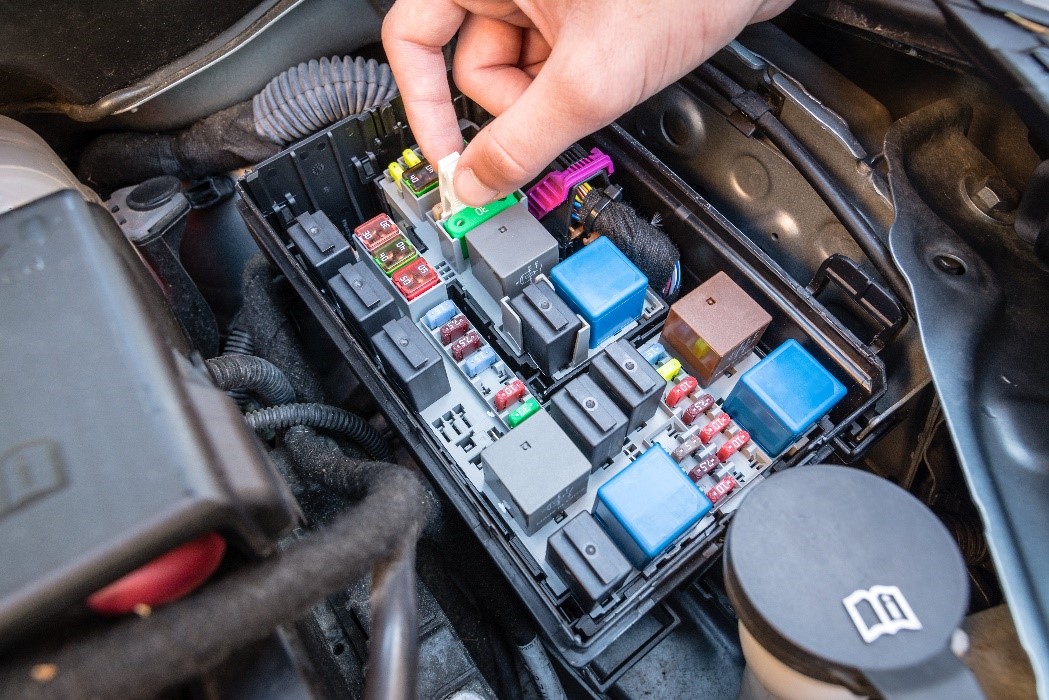SPRY345B february 2022 – april 2023 DP83TG720R-Q1 , DP83TG720S-Q1 , TCAN1043A-Q1
- At a glance
- Authors
- Introduction
- Overcoming E/E architecture challenges
- Power distribution challenges and solutions
- Decentralization of power distribution
- Replacing melting fuses with semiconductor fuses
- Smart sensor and actuator challenges and solutions
- Zonal modules –new microcontroller requirements
- Smart sensors and actuators
- Data challenges and solutions
- Types of data
- Time sensitivity of data
- Communication security
- Conclusion
Power distribution challenges and solutions
The battery must supply power to most ECUs, which are distributed across the vehicle. In domain architectures, power distribution boxes comprising melting fuses and relays distribute this power, as shown in Figure 3.
 Figure 3 A typical power distribution box with
melting fuses and mechanical relays.
Figure 3 A typical power distribution box with
melting fuses and mechanical relays.The melting fuses in the power distribution box have different time-current characteristics (TCC) in order to support different types of wire harnesses and loads in the car. The box is located in an accessible spot in the vehicle in order to replace the fuses easily.
While Figure 3 shows no semiconductor content in the power distribution box, OEMs are upgrading these distribution boxes with semiconductor content; relays are being replaced by semiconductor high-side switches and input/output control lines are being replaced by communication interfaces such as Controller Area Network (CAN) and Local Interconnect Network (LIN) transceivers.
The motivation for using a semiconductor-based power distribution box is manifold – enhanced diagnostics, fault protection, resettable fuses, small-form-factor designs and harness wire weight reduction.
As OEMs implement zone architectures, system designers are rethinking power distribution with two additional considerations: decentralization of power distribution and replacing melting fuses with semiconductor fuses.